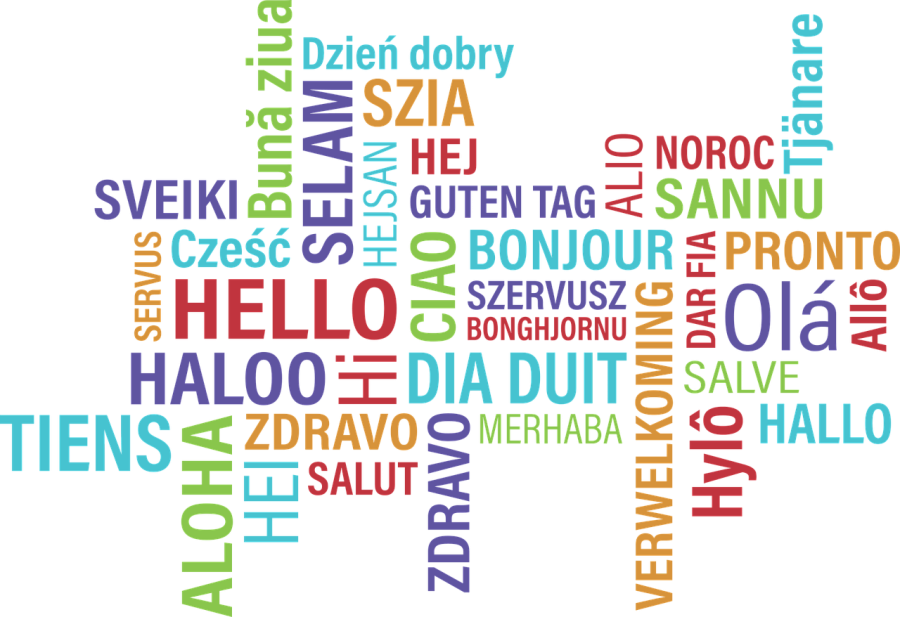How are non-English speakers being assimilated into Cordova High
In order to encourage non-English speakers to learn the language, teachers use different methods to help students adapt.
April 13, 2023
Cordova High School has a diverse population of students in terms of skin color, ethnic background and cultures and a fairly substantial number of those students are English language learners from immigrant families.
Data from the California Department of Education show that out of the 1,973 students enrolled at CHS in the 2021-2022 school year, 304 of them were English language learners. That works out to 15.4% of the total enrollment.
The English language learners outnumbered African American students (201), students of two or more races (151) and Asian students (143), according to Department of Education data.
Of the English learners, 28 were of Slavic origin.
| Agency | Languages Name | Grade 09 | Grade 10 | Grade 11 | Grade 12 | Total |
| Cordova High School | Russian | 10 | 6 | 4 | 5 | 25 |
| Cordova High School | Ukrainian | 0 | 3 | 0 | 0 | 3 |
| Cordova High School | Total | 540 | 526 | 426 | 481 | 1,973 |
Igor Fatta Fedotov, who teaches social science to 9th and 10th graders at CHS, said an individual’s background, culture, and what language they speak are all factors in how that person adapts to a new environment.
“When I went to school as an English language learner. I had nobody that spoke my language so I had to adapt immediately,” Fedotov said. “I learned English in six months from nothing to near fluency because I had to talk with people. I was stuck in a situation where I couldn’t communicate with others … so I had to learn really quickly.”
Some non-native English speakers are under less pressure to learn the language because they have friends who speak both English and that person’s native language. In such cases, it often takes them longer to learn English because they’re not being pushed.
For other non-natives, as they come into American classrooms, it’s challenging for them to comprehend concepts in English, and so they utilize what they can in their vicinity. This includes Google Translate, other technology and even their friends.
Teachers say technology can also help students adapt to the language environment.
“Although we remember Chromebooks being like a grudge from COVID times… (they) have become more commonplace in the classroom and also result in kids having easier access to information,” Fedotov said.
With the help of technology, teachers no longer have to print out papers in multiple languages or translate things on their own.
“It has a positive adaptation in one way, but also negative in another,” Fedotov said. “Because the access to information in the individual’s native language allows students to not have to learn the language but still learn the content in some way.”
In order to encourage non-English speakers to learn the language, teachers use different methods to help students adapt.
“One thing I do that I learned from Ms. (Aly) Larson, and it’s a practice that other people do too, is use attendance questions,” English teacher Daniel Kozak said. “It normalizes participation.”
“For my weaker English students, I repeat three words at a time and then make them repeat back,” Kozak added. “So this is a way to get everybody talking at the beginning of class … and help them with pronunciation.”
For students who participate in extracurriculars after school, play sports or converse with people outside of class, they’re able to accelerate their English acquisition better, and that can motivate them to learn even more quickly.
“I see some students at the beginning of the year who couldn’t speak at all – it’s small steps, but now they’re finally comfortable at speaking in English,” Kozak said. “Now I see them going from a couple of words to piecing together sentences.”
Not every student will feel comfortable speaking in class, and encouraging participation from non-natives can be challenging. Some educators try to overcome the language barrier by giving students time to adapt or allow the non-English speaker to sit next to another person who speaks their language.
“Something I do as a teacher is include my own bilingual ability in my classes (specifically) for the Russian-Ukrainian students,” Fedotov added. “But generally, the hardest part is finding that connection point.”
For Fedotov, it all comes down to providing information in an interesting fashion to get students “to still buy into the content.”
State education regulations require schools to help English learners develop their language skills and ability in English language development classes until they’ve progressed to the level of a native speaker.
But beyond the classroom, CHS also offers clubs such as the Slavic Empowerment Club, the Armenian Club, the Afghani Club and others to help non-English speakers better adapt and find friends so they won’t be in solitude.
“I think something that Cordova does very well is it encourages students of different backgrounds to come together and talk,” Fedotov said. “Something that’s really cool about our city and the school is that we’re extremely diverse. … Here we have so many different backgrounds, languages, religions and races of people, and it allows for people who are English learners to not be looked down on.”


Somebody once told me I ain't the sharpest tool in the sheddddd • Apr 13, 2023 at 6:00 pm
What an amazing article! I love it